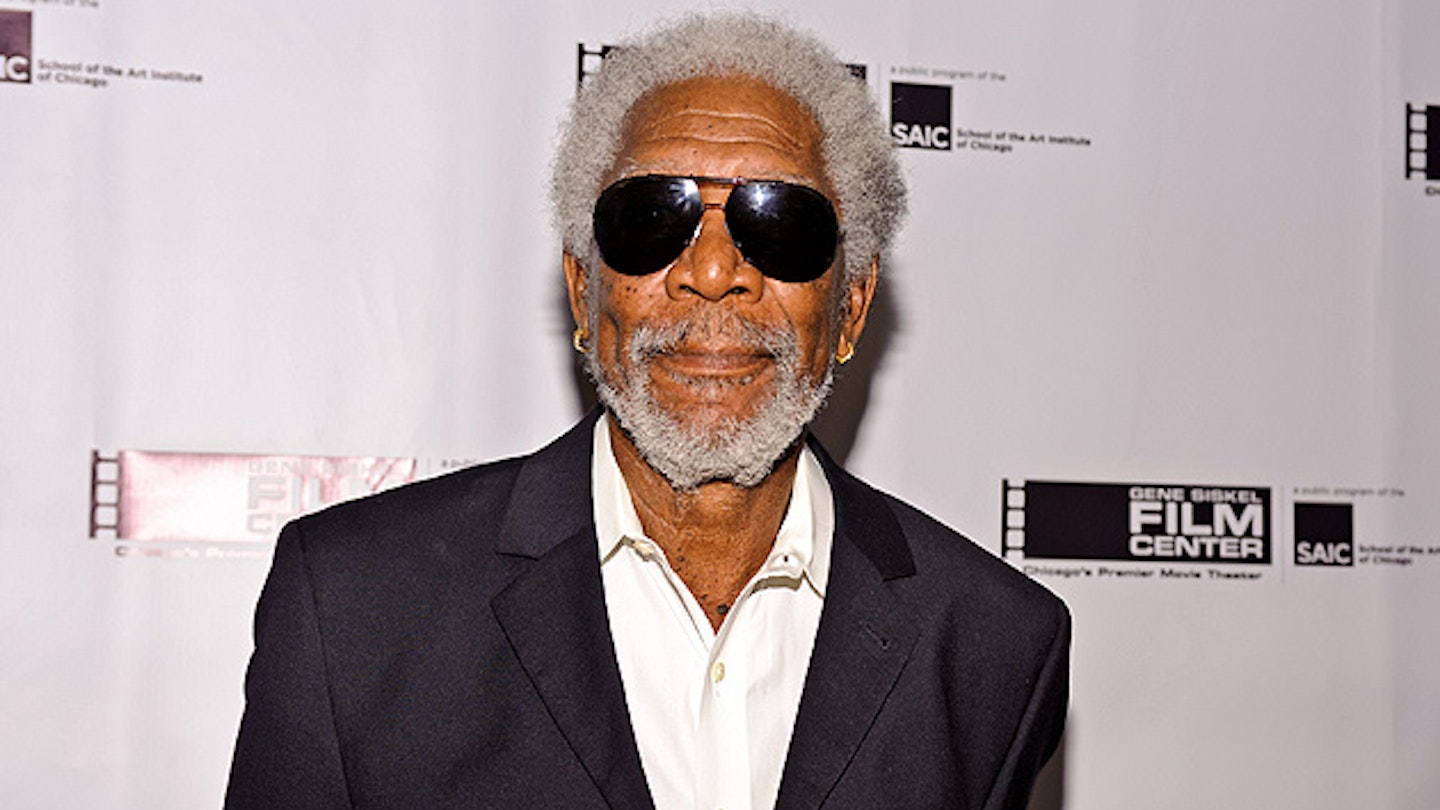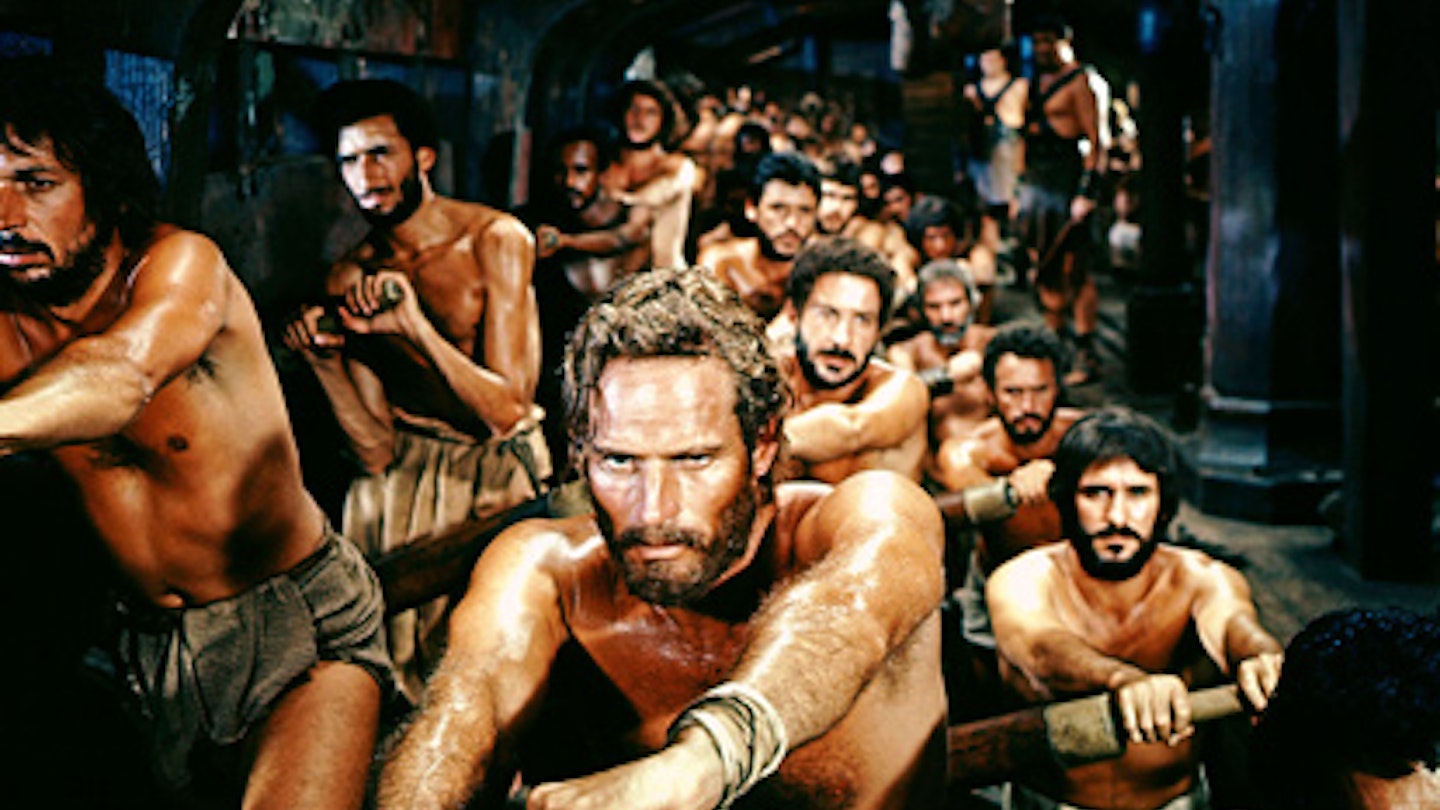In an age of widescreen epics, Ben-Hur was consciously designed to be the biggest and best of them all. Producer Sam Zimbalist spent five years planning the project. It was to cost an unprecedented $15 million. It would contain the most expensive action sequence ever filmed, while among its 300 locales would be the biggest single set ever created.
There would be a record 365 speaking parts, 73 of which would be credited. Its director, William Wyler, would collect the largest sum ever paid to an individual for a motion picture and go on to shoot a phenomenal 1,125,000 feet (about 213 miles) of footage, of which all but 23,8 3 8 feet would end up on the cutting-room floor. So determined was Wyler to outdo the master of spectacle, Cecil B. DeMille, that he even selected Moses, from his 1956 The Ten Commandments, for the title role.
Yet much of this was a speculative show of bravura, as MGM was in a financial crisis. Ultimately, this calculated risk would become the biggest first-run grosser to date and land an unheard of 11 Oscars (a feat only matched since by Titanic). But it all could have been a different story, especially after Zimbalist died on location in Rome. Lew Wallace began writing Ben-Hur just after the Civil War. The biggest American bestseller of the 19th Century, it was adapted for the stage in 1899, with future cowboy legend William S. Hart as Messala. Sidney Olcott directed a screen version for Kalem in 1907, which famously employed the services of the Brooklyn Fire Department for the chariot race. But nothing could have prepared film folk for the blockbuster rendition filmed in Italy and released by MGM in 1925.
Yet the newly-formed studio nearly had a disaster on its hands, as the rise of Mussolini and the incompetence of director Charles Brabin and his star, George Walsh, brought the production to a standstill. But wunderkind producer Irving G. Thalberg stepped in to rescue the project by appointing Fred Niblo as director and casting Ramon Novarro in the lead. A young William Wyler acted as an assistant director on the chariot sequence and, so, when Zimbalist offered him the remake 33 years later, he seized the opportunity — even though he was taking a monumental risk, as his reputation rested on intense (and some would say rather arty) melodramas. His main concern was the screenplay. Karl Tunberg's original was unusable, yet he was to retain sole credit and achieve the unwanted distinction of being the film's only failed Oscar nominee. Novelist Gore Vidal was brought in for a rewrite, only to be shuffled along after Wyler nixed his notion of a homoerotic undercurrent to Judah and Messala's rivalry (thus depriving us of a queer hero for a whole year, before a bathing Laurence Olivier asked Tony Curtis if he preferred oysters or snails in Spartacus).
Instead, British playwright Christopher Fry came on board, much to Charlton Heston's relief. Not that he was the first choice for the pivotal role. Burt Lancaster, Kirk Douglas and Rock Hudson had all been considered after Paul Newman announced, following his disastrous debut in The Silver Chalice (1954), that he would, "Never again act in a movie in a cocktail dress." But, viewed today, who else could have carried the picture with such physical prowess and moral dignity? Despatched by his former childhood friend into the imperial galleys, Judah Ben-Hur returns to Jerusalem as a Roman citizen, having rescued the admiral, Quintus Arrius, from a pirate attack. Intent on avenging himself on Messala, he duels to the death with him in a chariot race at the Circus Antioch before seeking his mother and sister in the leper caves, following his encounter with the crucified Christ.
Ben-Hur is a hero without a cause whose motive for action can, perhaps, be found in Marlon Brando's "Whaddyagot?" retort in The Wild One (to paraphrase the question, "What are you fighting for?") Initially he feuds with Messala out of spurned friendship, albeit with a little bruised national pride on the side. Then he exhibits a well-honed survival instinct and sense of military duty, during the sea battle. Revenge is now his prime justification and pure hatred drives him on during Yakima Canutt's impeccably staged chariot race. But then he gets a touch of religion and his quest to locate his kin is inspired by new-found humanity and filial love. It's kneejerk stuff of course, but a tad more complex than your average muscle-bound, gun-toting thuggery.
No wonder Wyler said when the movie wrapped: "Well Chuck. Thanks a lot. I'll try to give you a better part next time."



